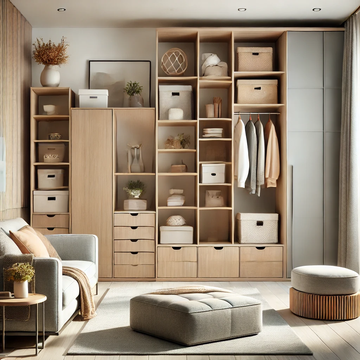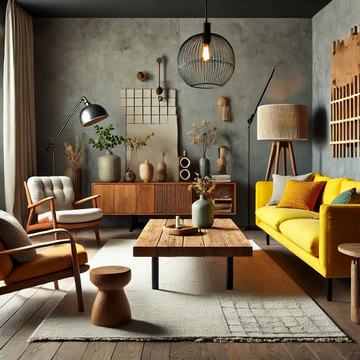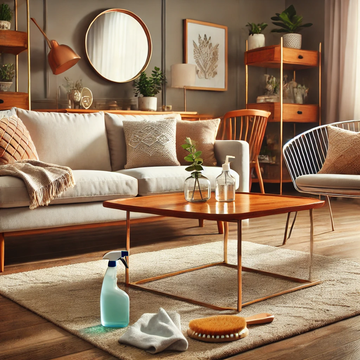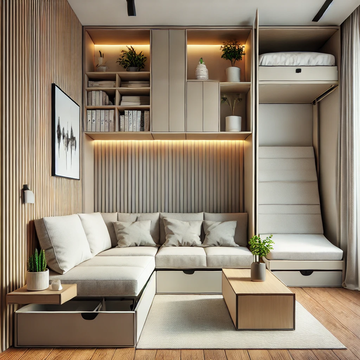Why Designing Your Office Space Matters
Let’s be honest—working in a poorly designed office can be downright draining. It’s like trying to focus in a room full of distractions. Ever found yourself straining to concentrate while your desk’s in the line of sight of every passing colleague? Or maybe you've struggled with an uncomfortable chair that makes you wish you’d just stayed in bed? We’ve all been there. Creating a well-designed office space isn’t just about aesthetics; it’s about fostering an environment where you and your team can truly thrive.
Think of your office as a canvas—it should inspire productivity and creativity, not stifle it. That’s why we’re here to help you design a workspace that works as hard as you do. From smart layout tips to ergonomic furniture choices, we’ll walk you through everything you need to create an office space that’s both functional and enjoyable to work in. Ready to transform your workspace?
Step 1: Assess Your Needs
Understanding Your Team’s Requirements
Before diving into design ideas, take a moment to consider what your team needs. Is everyone collaborating on projects all day, or are there plenty of quiet, individual tasks? Think about the way your team works best. For instance, if your office is buzzing with constant brainstorming sessions, you might need more open spaces and informal meeting areas. On the other hand, if people are focused on solo tasks, quiet zones and private offices might be the way to go.
Evaluating Space Constraints
Next, take stock of your actual space. It’s easy to get excited about design ideas, but remember to work within the constraints of what you’ve got. Measure your space and note any architectural features or obstacles you’ll need to work around. Maybe you’ve got a lovely bay window with a great view—why not use it as a focal point?
Step 2: Plan Your Layout
Open vs. Closed Office Layouts
Now, let’s talk layout. Do you go with an open plan or stick with closed offices? An open layout can encourage collaboration and communication but might lead to distractions. Alternatively, closed offices offer more privacy but could hinder spontaneous brainstorming sessions. It’s all about finding the right balance that suits your team’s working style.
Ergonomic Considerations
Comfort is key. Invest in ergonomic furniture that supports good posture and reduces physical strain. Imagine sitting in a chair that actually feels like it was made for you—much better than that creaky old office chair you’ve been putting up with, right? Adjustable desks and comfortable chairs can make a world of difference in how you feel at the end of a long workday.
Zones and Areas
Consider dividing your office into distinct zones. Create dedicated areas for individual work, group collaboration, and relaxation. For example, you might set up a cosy lounge area for informal meetings or breaks. This not only keeps your office organised but helps everyone stay focused and productive in their designated spaces.
Step 3: Choose Your Furniture and Equipment
Selecting Ergonomic Furniture
When choosing furniture, think ergonomics. Look for chairs that offer lumbar support and desks that can adjust in height. It’s not just about comfort—it’s about preventing strain and injuries that could sideline you for days. If you’ve ever dealt with back pain from an ill-fitting chair, you know exactly why this is important.
Technology Integration
Make sure your tech is seamlessly integrated into the office design. Position computers and printers where they’re easily accessible but not cluttering up valuable desk space. And don’t forget cable management—tangled cords can be a major distraction.
Step 4: Lighting and Acoustics
Optimal Lighting Solutions
Lighting can make or break your office environment. Combine natural light with smart artificial lighting to create a pleasant atmosphere. Ever tried working under harsh fluorescent lights? It’s not exactly inspiring. Aim for lighting that reduces eye strain and creates a warm, inviting space.
Acoustic Treatments
Think about noise levels too. If your office is prone to chatter and phone rings, consider adding acoustic panels or soundproofing materials. It’s amazing how a bit of noise reduction can help everyone concentrate better.
Step 5: Colour and Decor
Colour Psychology in the Office
The colours you choose can impact mood and productivity. Blues and greens often create a calming effect, while pops of bright colours can energise and stimulate creativity. Why not add some colourful artwork or inspirational quotes to boost morale?
Personalising the Space
Make the space your own. Incorporate elements that reflect your brand’s identity and values. Personal touches like plants, artwork, or even quirky desk accessories can make the office feel welcoming and uniquely yours.
Step 6: Implementing Flexibility
Adjustable Workspaces
Flexibility is key in today’s work environment. Consider incorporating adjustable workspaces or hot-desking options. This adaptability can help cater to different work styles and needs. Plus, it’s a great way to keep the office dynamic and engaging.
Adaptable Design Elements
Use modular furniture and movable partitions to easily reconfigure the space as needed. If your team’s needs change, your office design should be able to change with them.
Maintaining the Workspace
Regular Updates and Maintenance
Keeping your office looking fresh doesn’t have to be a big chore. Schedule regular tidying and maintenance to ensure everything remains in top shape. A clean and organised space helps maintain a productive atmosphere.
Labelling and Categorising
Labeling can seem a bit tedious, but it’s incredibly helpful. When everything has its place, it’s easier to find what you need and keep the office tidy. Plus, it’s a simple way to boost efficiency.
Developing Good Habits
Encourage habits that help maintain order. Getting into the routine of tidying up after each day or meeting can keep clutter at bay. It’s a small effort that pays off in a big way.
Safety Considerations for Office Design
Storing Sharp and Hazardous Items
Even in an office, safety matters. Store any sharp or hazardous items securely, out of reach of those who shouldn’t have access. It’s all about preventing accidents and ensuring a safe working environment.
Preventing Wear and Tear
Protect your office equipment and furniture from excessive wear and tear. Regular maintenance and thoughtful placement can extend the life of your investments.
Safe Lifting and Access
When setting up your office, consider safe lifting practices for any heavy items. Keep frequently used items within easy reach to avoid unnecessary strain.
Ready to Get Designing?
And there you have it—a complete guide to creating an office space that’s both functional and inspiring. Whether you’re revamping a small home office or outfitting a bustling corporate space, there’s a design solution out there that’ll make your workday much more enjoyable. So roll up your sleeves and get started on making your office a fantastic place to be!




